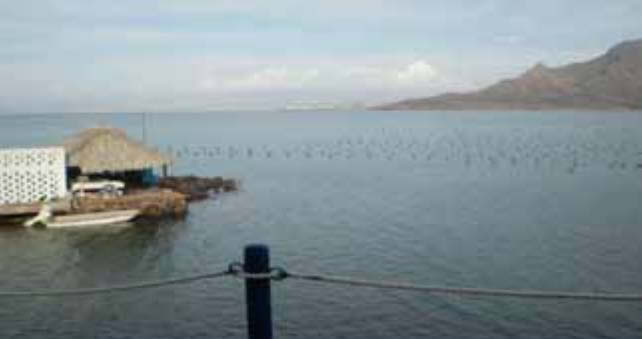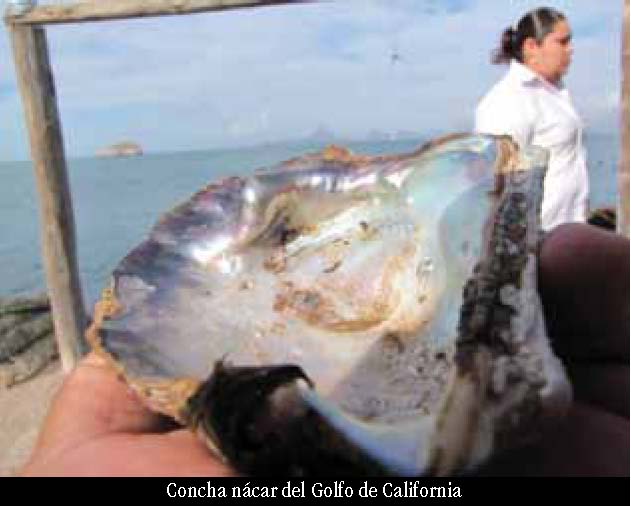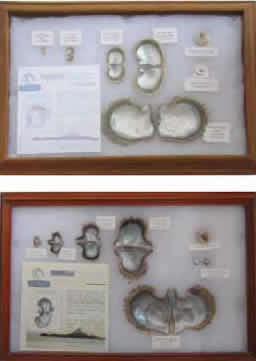Contents | 3 | 4 | 5 | 6 | 7 | 8 | 9 | 10 | 11 | 12 En español
Guaymas
Environmentally friendly, top
quality pearls cultivated
The great productivity of the Gulf of California is the primary factor for pearl cultivation having become a reality in Bacohibampa Bay. For the reproduction and development of marine animals like the pearl oyster (a mollusk) phytoplankton and other microscopic organisms are required and fortunately abound in these waters.
That’s the reason why the company Perlas del Mar de Cortés cultivates pearls there and is the only pearl farm on the entire North American continent.
The site is a tourist attraction where visitors can observe the methods used in the production and development of the pearls. It contributes to the local market by selling fair trade jewelry and also offers a tranquil place with picturesque sunset views out over the ocean.
It takes between two and ten years for a pearl to become well-formed and of adequate size, but this process can be sped up by catching an oyster and implanting it with a tiny sphere that it will then cover with it’s “pearl sac”. The oysters are then maintained in cages in the bay, After developing for 18 months within the oyster, the pearl is mature and can be harvested. It is then used to make jewelry such as rings, earrings and necklaces.
Marine biologist Douglas McLaurin, pearl developer and producer, explains that in1993 he and his classmates developed the cultivation method used for the first time in Mexico.
“We did this to develop a new technology” said McLaurin. “It’s incredible what one can do if one wants to do something for the good of one’s country.”
They hope that in the future this new technology will spread to other parts of the country and will demonstrate the possibility of both another type of fair trade production and research method. This type of cultivation creates income without causing harmful consequences to the environment. It increases the reproduction of the species, called Nacar, which for many years was endangered because of its over exploitation.
*CETMar (Center for Marine Technology Studies), Guaymas and CBITIS 40 respectively



